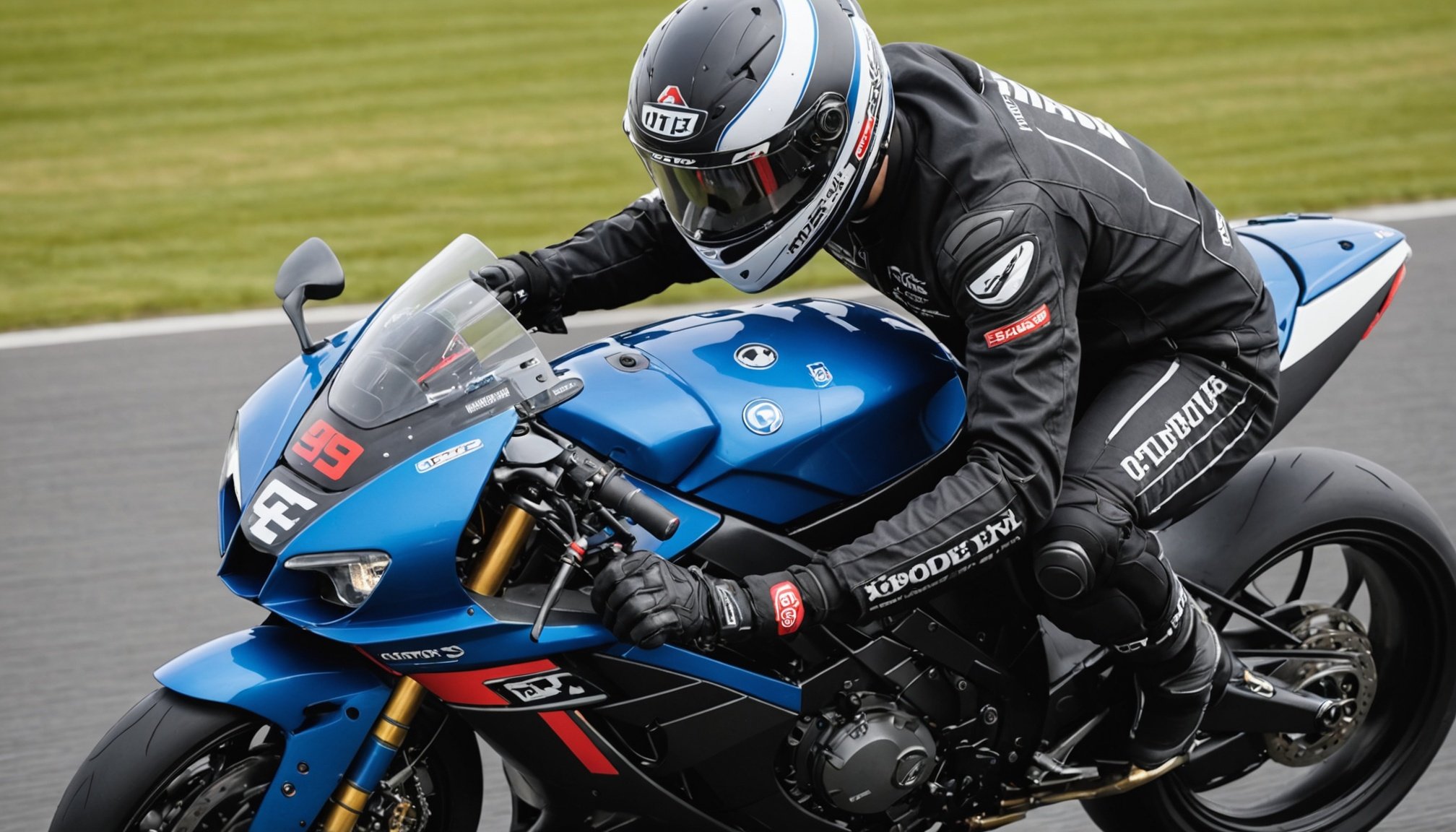Overview of GPS Lap Timers
GPS lap timers are vital tools in the racing world, offering precise performance tracking and racing enhancement. As a compact device equipped with satellite-based positioning capabilities, these timers measure lap times with a high degree of accuracy by pinpointing a vehicle’s location on a track.
In the realm of motorsports, performance tracking is crucial for drivers and teams aiming to optimize their racing strategies. Accurate data collection via GPS lap timers allows racers to assess their current performance and make necessary adjustments. Through detailed analysis, drivers can identify areas of improvement, enhancing their racing enhancement potential.
Also to discover : Mastering the Art of Riding Sport Bikes on the UK’s Scenic Narrow Country Lanes: Top Tips and Strategies
GPS lap timers not only calculate elapsed times for each lap but also provide insights into split times, speeds, and sometimes even G-forces. This wealth of information, when reviewed, facilitates a deeper understanding of vehicle dynamics on different parts of the track, assisting racers in fine-tuning their approach.
Incorporating a GPS lap timer into a racing strategy can significantly benefit drivers by offering a comprehensive overview of track performance. With these insights, racers can confidently alter their driving techniques, aiming for faster lap times and overall improved results.
In parallel : Ultimate guide to riding sport bikes safely on slippery uk roads: top abs tips you need to know
Selecting the Right GPS Lap Timer
When deciding on a GPS lap timer, there are key features to prioritize. Look for timers that offer high accuracy, easy readability, and robust data analysis functionality. The market’s top brands frequently include these must-haves in their models.
In a features comparison of popular GPS lap timers, brands like Aim, Starlane, and Qstarz stand out. Aim typically offers advanced data recording features and excellent compatibility with various GPS models. Starlane is known for its intuitive interfaces and user-friendly design, while Qstarz provides high precision at a competitive price.
Selecting a GPS lap timer also depends on whether you’re focusing on budget or advanced racing needs. If budget constraints are a consideration, Qstarz models deliver excellent performance without breaking the bank. For racers who demand comprehensive data analysis and greater customisation, Aim’s options are more suitable.
Ultimately, the right GPS lap timer should align with your specific needs and the features most important to your experience, ensuring that your investment enhances your performance on the track.
Tools Required for Installation
Installing your new equipment yourself can be a rewarding experience, but having the correct installation tools is crucial for success. Here’s an equipment list to ensure your DIY installation goes smoothly:
- Screwdriver set
- Hammer
- Drill with bits
- Tape measure
- Level
- Stud finder
Before diving into the project, address safety precautions. Make sure to wear protective eyewear and gloves, especially when handling sharp or heavy materials. It’s vital to turn off electricity when the installation involves wiring, helping you avoid accidental shocks.
Additionally, proper preparation of your work area is essential. Begin by clearing the space of obstacles and clutter, creating a neat environment to manoeuvre efficiently. Ensure the area is well-lit for optimal visibility, reducing chances for mistakes. Place a drop cloth or tarp on the floor to protect surfaces from potential damage.
By equipping yourself with the right tools and ensuring a safe and orderly work area, your DIY installation can proceed with confidence. Keeping these installation tips in mind will steer you towards a successful project completion!
Step-by-Step Installation Guide
Installing a GPS lap timer on your sport bike can greatly enhance your riding experience by providing accurate lap times and telemetry data. To ensure a successful installation, follow these installation steps carefully.
First, choose an appropriate location for mounting the lap timer. Consider a spot that offers a clear view of the timer while not obstructing your dashboard. Use the provided mountings or brackets to secure the device firmly. Ensure it doesn’t interfere with your handlebars or any controls.
GPS setup is crucial for obtaining precise timing data. Begin by positioning the GPS antenna in a location free from metal obstructions—often on the tail section or under the rear seat. Secure it using provided adhesive pads or velcro straps.
Next, refer to the wiring instructions. Connect the power cable directly to your bike’s battery, ensuring tight and secure connections. Some models may require integration with the bike’s electrical system, so follow the diagram in the user manual closely. Protect the wires from heat and moving parts using cable ties.
Finally, test the lap timer by powering on the bike, ensuring all connections are stable and the GPS is acquiring a signal. Check the manufacturer’s guide for troubleshooting if needed.
Optimal Performance Tracking Setup
Achieving accurate performance tracking requires precise calibration of your GPS lap timer. This process begins with setting the correct calibration settings. Ensure your device is updated to the latest firmware and meticulously configure the timer based on your racing venue’s specifics, like track layout and weather conditions.
During practice and races, adhering to best practices can maximize your lap timer’s effectiveness. It’s advisable to initiate data logging before hitting the track to capture detailed telemetry. Consistent placement of the timer helps in maintaining data uniformity across all sessions.
Data analysis is crucial post-race. Begin by identifying patterns in lap times, focusing on sections where speed variations occur. Compare your data against peers to glean potential areas for improvement. Use this analysis to adjust strategies, pinpointing where gains can be made. Advanced users might leverage software to visualize data, offering deeper insights into performance metrics.
To encapsulate, successful performance tracking is a blend of meticulous calibration, thoughtful usage practices, and comprehensive data analysis. By anchoring on these elements, racers can refine their techniques, paving the way for enhanced track performance.
Troubleshooting Common Issues
When dealing with GPS lap timers, users often encounter familiar setup woes such as device connectivity and calibration problems. Let’s start by addressing these obstacles effectively. If you’re facing connectivity issues, ensure that your device has a clear line of sight to the sky, and double-check that all software and firmware are up-to-date. Inaccurate lap times frequently stem from poor calibration; be meticulous during the initial setup, ensuring the timer is set to the correct track and that all parameters align accordingly.
Solving Frequent Problems
For better outcomes, regularly synchronise your GPS lap timer with any accompanying apps to mitigate data mismatches or latency challenges. In circumstances where the timer fails to retain charge, inspect both battery health and contacts for corrosion, ensuring robust operation over time.
Maintenance Tips for Longevity and Reliability
Maintenance is pivotal to safeguarding your GPS lap timer’s durability and functionality. Consistently clean the device, removing dust or grime, and store it in a dry, secure location to avoid moisture damage. Periodically inspect all components for signs of wear and tear, acting promptly to resolve any detected issues. Following these maintenance tips and troubleshooting practices can greatly enhance the reliability and lifespan of your GPS lap timer.
Additional Resources and Community Engagement
Engaging with online forums and the broader racing community can be a significant assist to sport bike enthusiasts. These platforms offer a wealth of knowledge, where riders share firsthand experiences, troubleshooting advice, and build connections. Many forums have dedicated sections for different bike models, allowing you to connect with others who share your specific interest.
Participating in the racing community allows riders to exchange tips, discuss the latest trends, and enhance their riding skills. This engagement fosters a sense of camaraderie and provides unique insights that can only be accessed through active community involvement. Enthusiasts often organise local meets, track days, and events that offer an opportunity to learn from more experienced riders.
In addition to forums and community engagement, many riders find value in joining support groups. These groups can offer emotional support, particularly for new riders navigating the challenges of the sport. They are often a great resource for beginners looking for guidance on basic maintenance or starting out in competitively racing.
Overall, connecting with the sport biking community enriches the entire riding experience, making it safer and more enjoyable.











